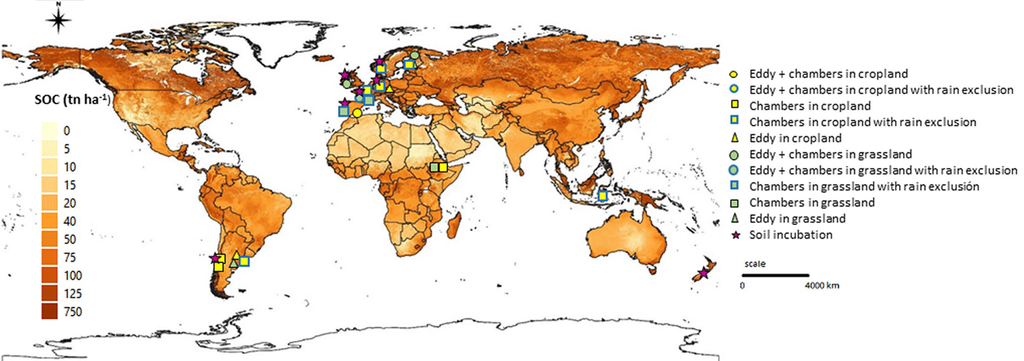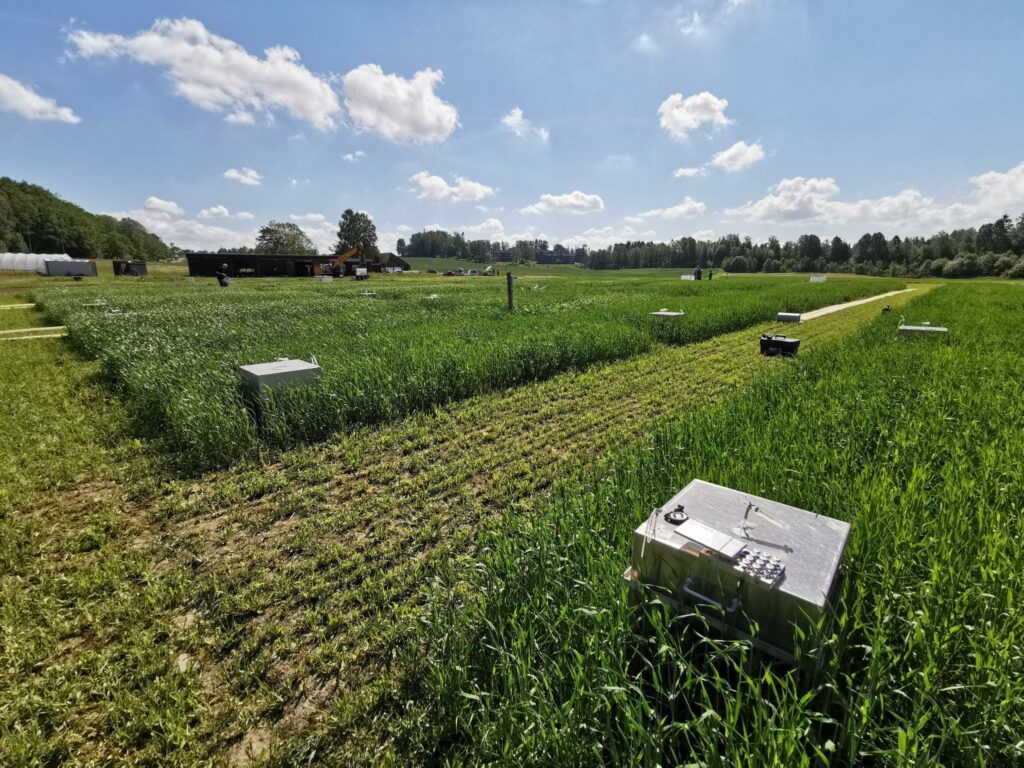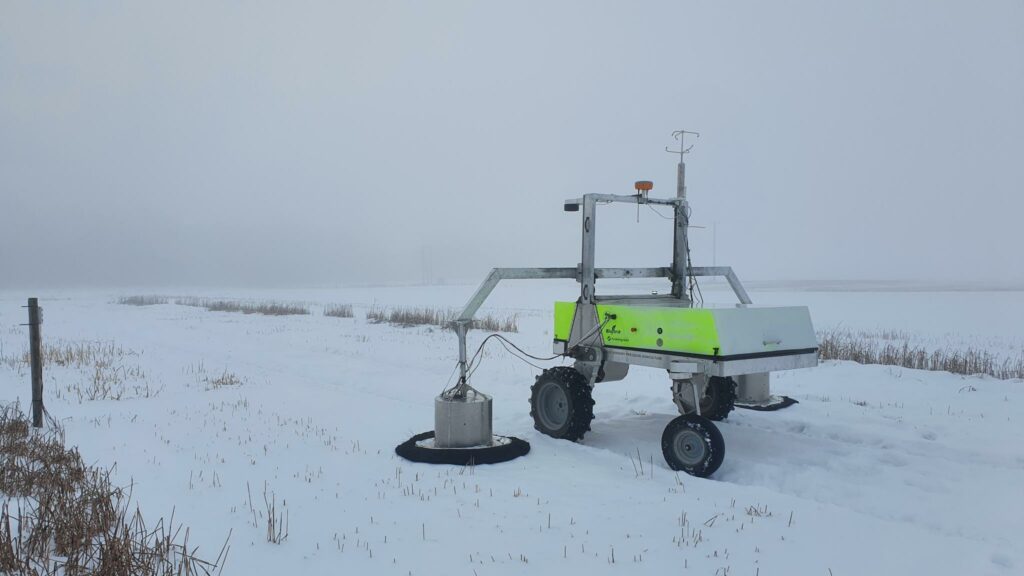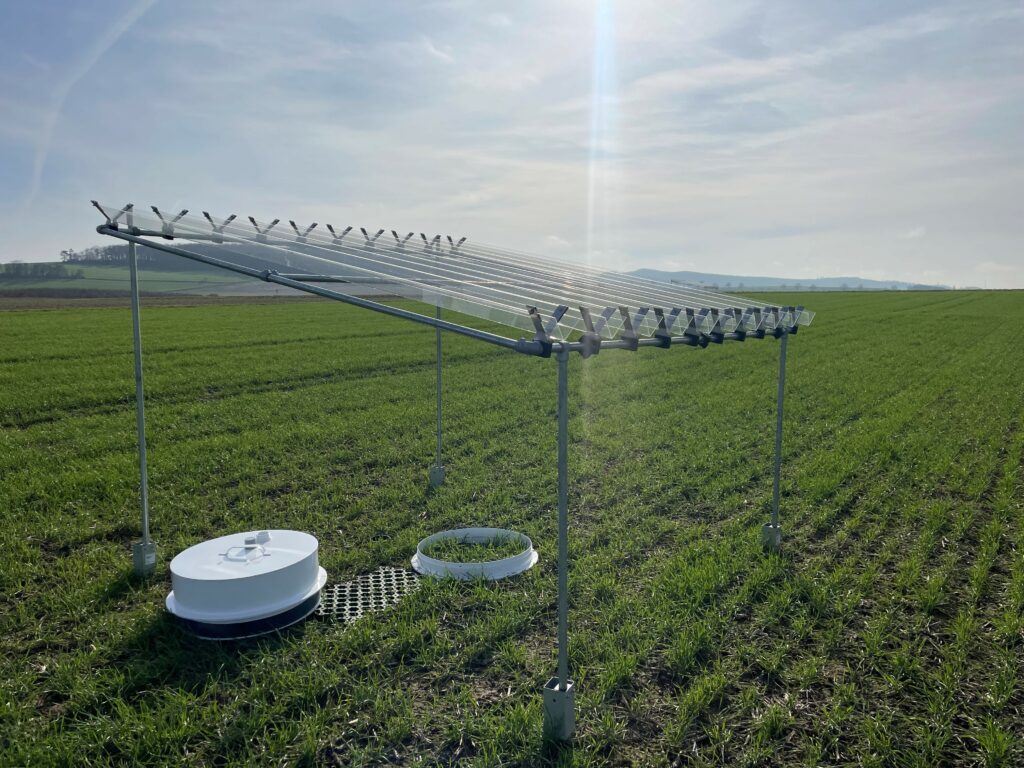TRUESOIL combines GHG measurements under field conditions with soil physico-chemical and microbiological properties to better understand the processes and drivers of soil C sequestration/persistence and GHG emissions across a wide range of climates, soils and agroecological practices and under ambient conditions and rainfall manipulation experiments. TRUESOIL also involves laboratory studies to address the role of microbial community composition as shaped by agricultural management in soil organic matter stabilization and nutrients turnover. Finally, modelling approaches are employed to investigate carbon and nitrogen cycling under different management and climate scenarios. The specific ojectives include (but are not limited to):
- Addressing SOC sequestration without enhancing GHG emissions and contributing scientifically to the goal of “fostering holistic agricultural management practices”.
- Contributing to the objectives of the European Joint Programme (EJP) – Soil at large, in line with the goal of “allowing sustainable food production, soil biodiversity and the preservation of the ecosystem services”.
- Focusing on the phenomenon of C saturation to scrutinize the concept of C and the set of control variables and amend microbiological variables to validate the proxy concept.
- Studying the mechanisms of SOC persistence and N2O emission potential and the influence of minerals, microorganisms, and organic matter stoichiometry thereon.
- Delivering recommendations about specific management practices to provide scientific support for policy development at the European and global levels.
- Assessment of offsetting options in farmed landscapes (crop and site-specific) to inform future management strategies to increase C sequestration while reducing GHG emissions.
- Providing the best conservation management solutions to reduce the environmental footprint and the impact of climate change on soil C stabilization and N2O emissions.

To achieve the above, this project will utilize a range of existing field experiments that can be used to challenge our understanding of the key controls on C and N emissions and the trade-offs of soil C sequestration:
- two major EU land uses (croplands and grasslands) and their various agroecological management practices across different climatic zones (sub-boreal, temperate, Mediterranean, and semi-oceanic) in and outside of Europe,
- ambient climatic conditions and simulated drought conditions in a manipulated rainfall experiments at selected sites using rain-out shelters, and
- long-term agricultural sites subjected to various inorganic and organic amendments without showing C saturation.



